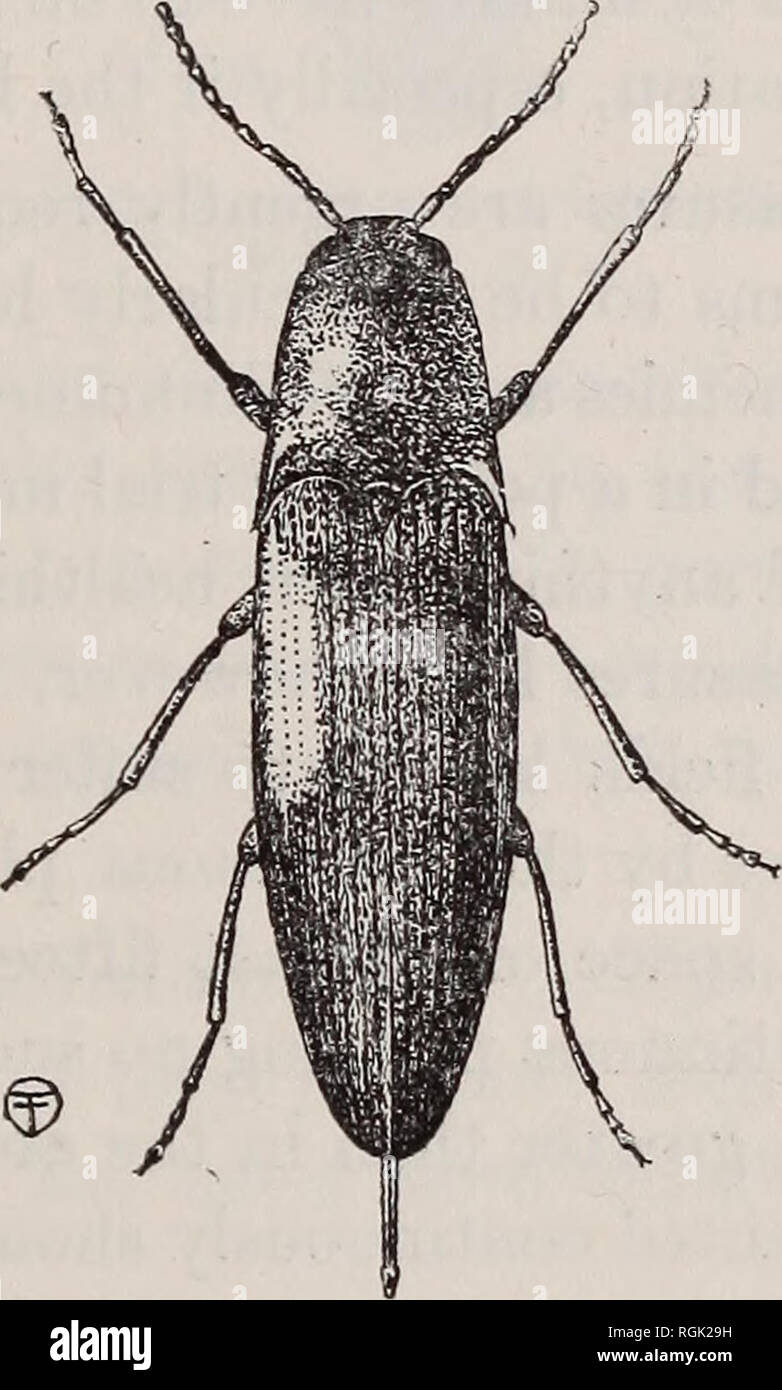. Bulletin of entomological research. Entomology. INSECTS IN SUGAR-CANE PLANTATIONS IN FIJI. ol The Sugar-Cane Wireworm (Simodactylus cinnamomeus, Boisd.) (fig. 6). The following species of wireworms have been found in the soils of the Fijian cane- fields : Simodactylus cinnamomeus, Boisd., Lacon siricticollis, Fairm., and Monocre- pidius pallipes, Esch. The first two species, but more particularly S. cinnamomeus, are very destructive to young cane plants, while the third is distinctly beneficial, as it is a very formidable enemy of the white grubs of Rhopaea vestita. S. cinnamomeus is by far

Image details
Contributor:
Book Worm / Alamy Stock PhotoImage ID:
RGK29HFile size:
7.1 MB (249.9 KB Compressed download)Releases:
Model - no | Property - noDo I need a release?Dimensions:
1226 x 2037 px | 20.8 x 34.5 cm | 8.2 x 13.6 inches | 150dpiMore information:
This image is a public domain image, which means either that copyright has expired in the image or the copyright holder has waived their copyright. Alamy charges you a fee for access to the high resolution copy of the image.
This image could have imperfections as it’s either historical or reportage.
. Bulletin of entomological research. Entomology. INSECTS IN SUGAR-CANE PLANTATIONS IN FIJI. ol The Sugar-Cane Wireworm (Simodactylus cinnamomeus, Boisd.) (fig. 6). The following species of wireworms have been found in the soils of the Fijian cane- fields : Simodactylus cinnamomeus, Boisd., Lacon siricticollis, Fairm., and Monocre- pidius pallipes, Esch. The first two species, but more particularly S. cinnamomeus, are very destructive to young cane plants, while the third is distinctly beneficial, as it is a very formidable enemy of the white grubs of Rhopaea vestita. S. cinnamomeus is by far the commonest of the three species, being found in all five types of soil, but reaching its maximum abundance in the rich low-lying fiats, where it frequently occurs in enormous numbers. The full-grown wireworm is sub-cylindrical in shape, and measures 25 mm. in length and 2 mm. in breadth. The dorsum varies in colour from a very light brown to a blackish brown, an intermediate shade being typical; the pleura and venter are pale brown. The newly hatched wireworm measures 2 mm. in length, and for a few days is of a semi-opaque white colour, but rapidly assumes a faint brown tint. It grows very slowly, the available evidence pointing to a larval period of not less than three years. The older wireworms under laboratory conditions moult every ten or twelve weeks.. Fig 6. Simodactylus cinna- momeus, Boisd., X 3. This wireworm pupates in a small earthen cell with smoothly plastered inner walls, and ten or eleven days later assumes the adult form. The beetle does not leave the soil immediately after its transformation, but generally rests in its cell for a fortnight or longer before emerging to feed and mate. The beetles are inactive during the day. and may be found in large numbers hiding behind the leaf-sheaths of cane, maize and various weeds, and in maize cobs, they also hide under lumps of earth on the surface of the soil. Towards dark they become more active and leave their hidi